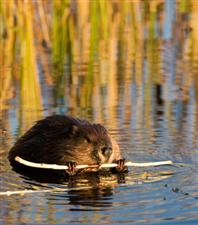How To Disinfect

For those not familiar with centigrade temperatures, conversion is accomplished by taking the amount in centigrade and multiply by 9, divide by 5 and add 32°= amt. in F. Thus, 25°C = 77°F.
Fomites are an inanimate object or material on which disease-producing agents may be conveyed such as feces, bedding, or food bowls or other feeding implements.
Phenolics can be categorized as either synthetic phenolics (SynPhenol-3®, One-Stroke Environ™, Avinol-3™) (often labeled as safe for birds) or older phenolics (Lysol™) may cause harm to some species (that is, cats) and should be used carefully (that is, the animal removed from cage while it is cleaned). Nolvasan® is the common biguanide used in veterinary medicine. Examples of QAC's (quaternary ammonium chlorides) include Roccal-D® or Parvosol™).
Diseases
Aspergillosis
Disease is stable at 25°C.
Disinfectant: Phenolics.
Comments: Grows well in hay, straw. Air exchange is critical for reduction in exposure to spores.
Baylisascaris (Roundworms)
Eggs are stable indefinately.
Disinfectant: Extreme heat. Blow torch all infected soil. Boil in lye.
Comments: All infected soil should be buried. Do not change species in raccoon, skunk or bear pens. Cages can be disinfected with blow torch or boiled in lye.
Canine Distemper
Disease is stable at 25°C for seven to eight weeks.
Disinfectant: QAC's or Phenolics Biguanide.
Comments: Aerosol spread, disinfect all surfaces. Fomites can promote transmission.
Duck Virus Enteritis
Disease is stable at 4°C for two months, 4°C for two weeks.
Disinfectant: Phenolics, Biguanide, Chlorine.
Comments: Instantly inactivated at pH 3 and below or pH 11 and up. Fomites can be important. Carcass removal is critical to prevent continued infection.
Feline Panleukopenia
Disease is stable at 25° C for one year.
Disinfectant: Chlorine, Phenolics, Biguanide.
Comments: Aerosol spread; clean all caging and fomites.
Mycoplasma
Disease is stable at 28° C for 21 days.
Disinfectant: Phenolics.
Comments: Fomites can promote transmission. Clean feeding trays, implements etc.
Newcastle Disease
Disease is stable at 27°C for four weeks.
Disinfectant: Phenolics, Chlorine, Formulin.
Comments: Shed in secretions (1° respiratory) and in aerosolized dried feces.
Parvovirus
Disease is stable at 25°C for three months.
Disinfectant: QAC's or Phenolics.
Comments: Can survive extremes in pH. Fomites (for example: feces) can promote transmission.
Rabies
Disease is stable at 4°C for weeks, 20°C for days.
Disinfectant: Biguanide, Phenolics, Parvosol.
Comments: Virus is probably not viable in an infected carcass after 24 hours. if unrefrigerated. Fomites are not important in transmission.
Salmonella
Disease is stable at 25°C for 12-14 weeks.
Disinfectant: Phenolics, QAC'smay get some strains.
Comments: Organism will live in drains! Hard to eradicate from infected premises. Commonly infected by contaminated food, water or fomites.
Toxoplasmosis
Disease is stable at 4°C for 68 days.
Disinfectant: Heat or freeze drying.
Comments: Infected cats defecating in feed troughs can infect domestic animals like goats or in wildlife rehab, deer.
For more details on disinfection, see Jan White's paper entitled Current Review of Disinfectants Used in Wildlife Care.
If you have comments or information that you would like to contribute to this site, please contact us.
References
Greene, Craig. E. and Janet P. Calpen. 1984. "Environmental Factors in Infectious Diseases" in Clinical and Microbiology and Infectious Diseases of the Dog and Cat. Philadelphia, PA: W.B. Saunders Co. 967 pp.
Block, Seymour, S. 1991. Disinfection, Sterilization and Preservation. 4th Ed. Philadelphia, PA: Lea and Febiger 1162 pp.